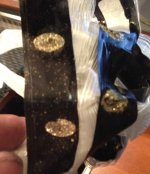I re-viewed the OP first post, and he seems to be talking about a street commuter. If the roads are smooth, its almost not an issue at all, especially at lower speeds (the wheel shown as an example, is low-powered and low-speed). However...
I would never use a cast wheel in an off-roader, which is intended to take bumps and jumps frequently. The ones that are strong enough to take hard hits (from E-motorcycles) are very heavy.
For a heavy rider, smaller diameter wheels are stronger than larger diameter (that being said, their are flimsy 20-inch rims, and heavy-duty 20-inch rims).
Full suspension will soften a pothole hit, compared to a hardtail, or a no-suspension.
Fatter tires will soften a pothole hit more than skinny tires (2.5-inch/3.0-inch is better than 2.0-inch, it doesn't have to be 4.0).
Moving the weight of the motor out of the hub and mounting it onto the frame somehow will make the rear wheel more survivable from a hard hit.
I would never use a cast wheel in an off-roader, which is intended to take bumps and jumps frequently. The ones that are strong enough to take hard hits (from E-motorcycles) are very heavy.
For a heavy rider, smaller diameter wheels are stronger than larger diameter (that being said, their are flimsy 20-inch rims, and heavy-duty 20-inch rims).
Full suspension will soften a pothole hit, compared to a hardtail, or a no-suspension.
Fatter tires will soften a pothole hit more than skinny tires (2.5-inch/3.0-inch is better than 2.0-inch, it doesn't have to be 4.0).
Moving the weight of the motor out of the hub and mounting it onto the frame somehow will make the rear wheel more survivable from a hard hit.



